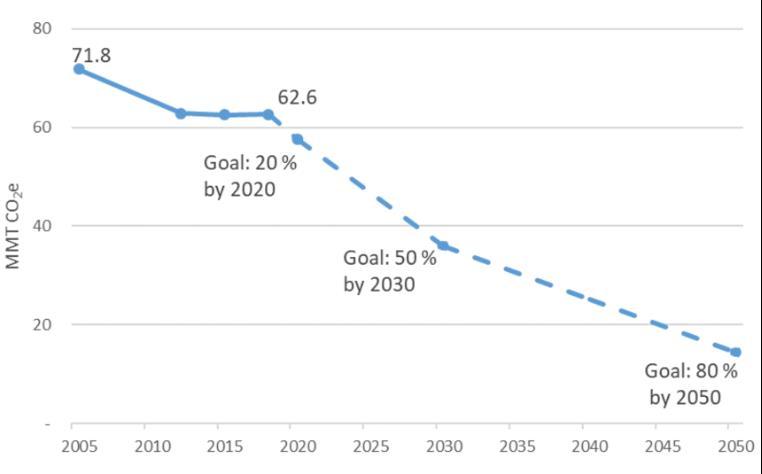
1 minute read
Regional Climate Target, Significance of Transportation
The region’s leaders adopted a 2030 climate target in October 2020,1 and several local governments have similar targets – reducing GHG emissions 50 percent by 2030 compared to 2005 levels. This goal is consistent with current climate science, such as the landmark 2018 IPCC Special Report on Warming of 1.5°C, which showed we need to make significant emissions cuts this decade to avoid catastrophic warming. While targets for deeper reductions or carbon neutrality by 2050 are also important, we need to focus on the 2030 target and the immediate policy changes needed if we are to set in place the patterns and practices that will be required to achieve these long-term goals.
Transportation Is the Region's Largest Source of Climate Pollution, and Most of these Emissions are from Cars
The Washington, DC region needs to do significantly more to reduce GHG emissions from the transportation sector, which is now our largest source of climate pollution. Forty-two percent of Metropolitan Washington’s GHG emissions are from transportation. Most of these emissions (60 percent) come from cars, SUVs, and trucks.2
The Region Has Made Progress on Electricity Sector Emissions; Now Let’s Tackle Transportation
In recent years, the region has made significant strides in enacting policies to reduce the climate impacts of the electricity sector, passing statewide legislation in Maryland, the District of Columbia and Virginia. These achievements will help us reach Metropolitan Washington’s adopted goal of reducing greenhouse gas emissions 50 percent below 2005 levels by 2030. Now it’s time to focus on the transportation sector. However, progress in reducing transportation emissions has slowed in the DC region in recent years,3 with similar trends in the majority of U.S. states.4
Figure 2: Metropolitan Washington Greenhouse Gas Emissions by Activity
Source: Image from the COG 2030 Climate and Energy Action Plan, page 4
2








